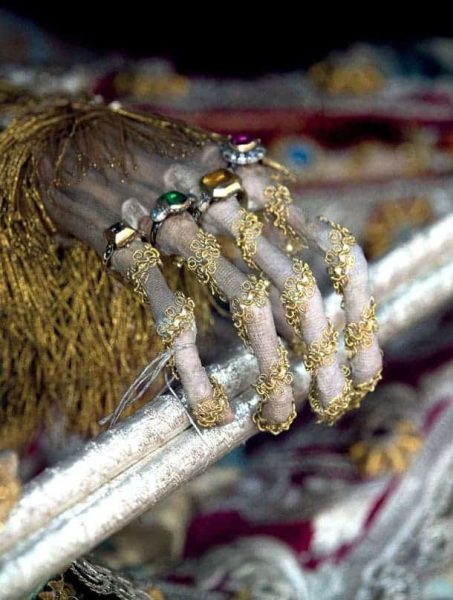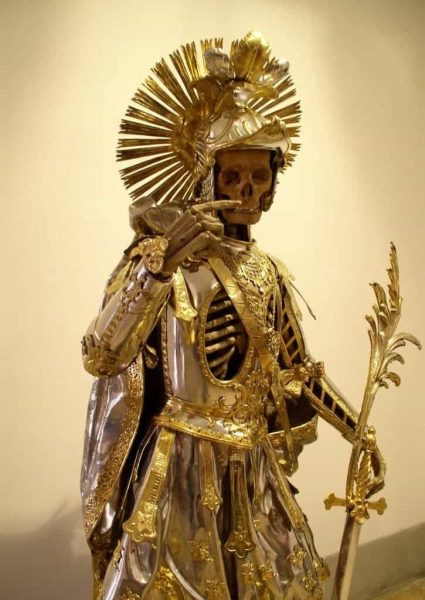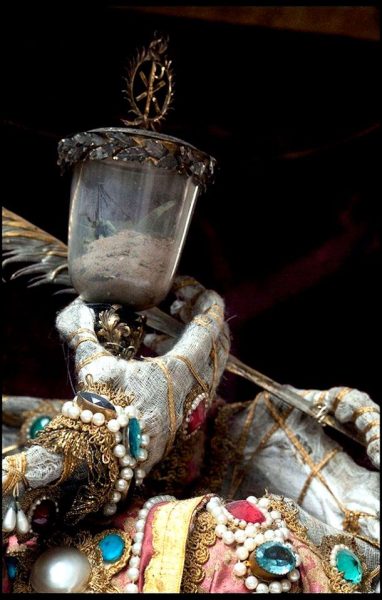The mystery of the “Catacomb Saints” unfolds as the adorned skeletons of ancient Romans, discovered in the catacombs of Rome, raise questions about their lavish decoration and origin.

These skeletons, given fictitious names, were sent abroad as relics of saints from the 16th to the 18th centuries, yet their true purpose and history are more intriguing than sainthood.
The skeletons, adorned with expensive jewels, are not saints in the strict sense. During the 15th century, Western Europe experienced the Beeldenstorm, a storm of iconoclasm involving the destruction of religious images.

In response, the Vatican devised an unusual solution—thousands of skeletons were excavated from Roman catacombs and installed in towns across Germany, Austria, and Switzerland.
While few, if any, of these corpses held religious significance, they were decorated to resemble saints. This macabre strategy aimed to replace destroyed Catholic art and church decorations. The skeletons served as symbolic figures of Catholicism in regions dominated by Protestantism.

However, by the 19th century, these skeletons became embarrassing reminders of historical conflicts. Despite being considered imitations and facing prohibitions on selling skeletons or their jewelry, some individuals continued profiting from these relics.
In 1803, the secular magistrate of Rottenbuch in Bavaria auctioned the town’s two saints. Decades later, in 1977, the residents raised funds to have them returned. Despite such efforts, the catacomb saints were largely forgotten and cast aside.

In 2013, researcher Paul Koudounaris brought them back into the spotlight with his book, attempting to document each catacomb saint.
These skeletons, handled by individuals who took sacred oaths to the church, were originally intended to represent martyrs. Their importance, however, evolved from spiritual symbols to social symbols over time.

Koudounaris emphasized that no modern-day value can be placed on these skeletons. As the meaning of these relics has changed, they now serve as miracles strengthening people’s connection to their respective towns, highlighting the fascinating journey of the Catacomb Saints from religious symbols to city symbols.





